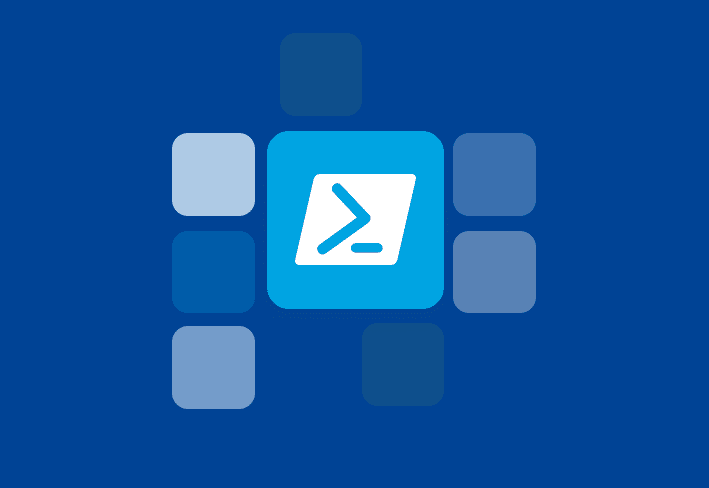Remote desktop is a feature you can use to access a remote computer as if it were physically right in front of you. Sysadmins often use it to provide remote support for end users when being physically in front of the device is impossible. It enables IT staff to “remote into” a device, control the cursor and keyboard, and troubleshoot problems, no matter where the problem device is.
Remote desktop helps IT pros amp up efficiency by effectively troubleshooting without moving. This makes remote desktop the solution end users don’t even know they need. App won’t work right? Remote desktop. Settings don’t make sense? Remote desktop. Videos playing all weird in Slack and making you want to cry because the videos look really funny, but you can’t watch them? Remote desktop.
Not that that oddly specific example is a true story or anything.
How remote desktop works
When someone uses remote desktop, they log in to a remote device as though they’re right in front of it. Say, for example, the poor soul who can’t get videos to play correctly in Slack asks IT for help (through a well-written and thorough ticket, of course). The sysadmin assigned to the ticket can use remote desktop to connect to that poor soul’s computer and troubleshoot remotely. Meanwhile, the end user sits in front of their device and marvels at the wit and bravery (and fast typing skills) of the sysadmin making things happen on the screen.
There are many different remote desktop utilities out there, but they largely fall into one of two categories: Remote Desktop Protocol (RDP) and ... everything else. 😅 “Everything else” encompasses remote desktop tools, such as ScreenConnect, TeamViewer, LogMeIn, Virtual Network Computing (VNC), and PDQ Connect.
Remote Desktop Protocol (RDP)
RDP is a protocol or underlying architecture that’s built into Windows. RDP allows you to connect to a remote device using the remote desktop connection, or RDC, client. And while RDP does encrypt incoming and outgoing traffic, it’s served as a host for many exploits over the years. For that reason, RDP connections are mainly reserved for internal use (on your network) and, ideally, via a virtual private network, or VPN.
Unlike remote desktop, RDP allows a single session at a time, meaning if a sysadmin were to RDP into an end user’s device, the end user would need to sign out for RDP to be successful.
Virtual Network Computing (VNC)
Virtual Network Computing, or VNC, is another way to establish a remote desktop connection. However, unlike RDP, VNC is inherently platform-agnostic, meaning you can remote into Linux, Mac, and other non-PC operating systems. Also, VNC supports many-to-one connections, enabling multiple devices to connect to the remote device simultaneously.
What to look for in a remote desktop solution
When you’re trying to find the best remote desktop software for your needs, there are two critical features to consider: security and usability.
Security in remote desktop software
Of course, anything involving a remote connection requires extra security precautions because the connection happens outside of your perimeter. With on-prem connections, you’ve got a few extra layers of security at your disposal (such as firewalls) to keep connections secure. Those are harder to control and oversee in remote connections, so you have to make up for those missing layers.
To do that, make sure the remote desktop software vendors you’re considering take security as seriously as you do. Can they provide documentation that shows how they secure remote connections? Do they have a comprehensive security guide you can refer to? Do they guarantee secure connections 100 percent of the time and tell you your risk of getting hacked doesn’t exist? Great if the answer is yes to those first two questions, but if it's a yes on that third one, run. This is an unrealistic promise that no vendor can guarantee.
Usability in remote desktop software
A remote desktop tool should make your life easier, not harder. The software’s usability likely depends on your environment, but here are a few questions to ask:
Is the software easy to set up?
Is product support readily available?
Is the user interface intuitive?
Is the software scalable to meet the demands of your environment?
Can you transfer files if you need to?
Is the end-user experience appropriate for your end users?
Other remote desktop software features to consider include the following:
Speed
Ease of use
Reliability
Operating system (OS) compatibility
Scalability
Cost
Reputation
How to set up a remote desktop connection with PDQ Connect
PDQ Connect has built-in remote desktop support, which enables you to remote into any device that runs the PDQ Connect remote desktop agent. Here’s how to get started.
Want to follow along in PDQ Connect?
If you’re not already one of our partners, you can sign up for a free trial of PDQ Connect and take our remote desktop features for a spin. Multiple spins, actually, since the trial lasts for 14 days. Try not to get too dizzy.
1. From the PDQ Connect console, click Devices. Then, click the name of the device you want to open up a remote connection to.
2. In the panel to the left, click Remote desktop. If you already have the remote desktop agent installed, skip to step 5. Otherwise, click the Install remote desktop agent button.
3. Once you get a message that says, “Agent installed successfully,” click Continue. Then, click the Download local viewer button.
4. Once the local viewer file downloads to your machine, run the .exe file to install PDQ RD Viewer. Once it’s installed, click Continue in the PDQ Connect console.
5. Click the Start remote session button. If you get a security prompt that says that app.pdq.com wants to open this application, click Open. Because you love and trust us. ❤️
A new window should open with your remote desktop. That’s all there is to it!
Peep that little Drag & Drop Files Here box in the bottom-right corner, too. PDQ Connect’s remote desktop feature makes it super simple to transfer files between the remote PC and your device.
Secure remote access best practices
Aside from the default security measures built into most remote desktop software, there are a few extra steps you can take to double down on secure remote access.
Secure RDP
If you’re a Windows shop, take extra precautions to secure RDP. The face of the PDQ blog and my colleague, Brock Bingham, wrote a fantastic piece with step-by-step instructions on how to secure RDP. I strongly recommend giving his article a read — if not for the great info, for his hilarious quips — but if you’re pinched for time, here are the basics:
Don’t expose RDP to the internet
Use a virtual private network (VPN) with RDP
Require long and complex passwords for RDP (16+ characters with symbols and numbers)
Limit login attempts
Patch your systems
Adhere to the principle of least privilege
Restrict local administrators from using RDP (local admins have RDP access on non-domain joined computers by default; change that setting!)
Use non-administrator accounts
Increase RDP security settings
Disable RDP when not in use
(And a partridge in a pear tree.)
Use trustworthy remote desktop software
Not all remote desktop software meets high security standards. Before signing on a dotted line with a remote desktop software vendor, dig into their security practices. Make sure they encrypt data during sessions and require secure password policies.
Securely connect to remote devices
We built PDQ Connect to adhere to the strictest security policies — because no one is paid enough to clean up an incident caused by “password123.” Check out the PDQ Connect Product Security Guide to see how we built our software to be as secure as possible.
Remote desktop FAQs
What is Microsoft Remote Desktop Protocol?
Microsoft Remote Desktop Protocol is Microsoft’s tool to establish remote desktop access. Remote Desktop Protocol, or RDP, enables IT professionals to connect to a remote PC, allowing them to view and interact with the remote machine as if they were physically right in front of it.
What is the difference between remote desktop and Remote Desktop Protocol (RDP)?
“Remote desktop” and “RDP” are often used interchangeably (we live in a Windows world, after all), but remote desktop software lets you “remote into” another user’s current computer session, while RDP lets you log in to a remote device without that connection being shared with someone. Remote desktop software functions effectively as a screen-sharing session, while RDP does not.
For example, a sysadmin may use remote desktop to “remote into” an end user’s device to troubleshoot it. In comparison, an office worker who unexpectedly needs to work from home can RDP into their physical device at the office. In essence, they can perform their work as if their work computer were right in front of them.
Is there a difference between remote desktop and virtual desktop?
Yes, there are differences between remote desktop and virtual desktop. A remote desktop allows you to access and control a computer from another device, while a virtual desktop is a virtualized computing environment that lives on a server rather than a physical machine.
How do you ensure your remote desktop connection is secure?
To ensure your remote desktop connection is secure, follow these best practices:
Use strong authentication
Limit access to remote desktop
Use encryption
Connect via a VPN
Record each remote desktop session
Monitor access history
Use reputable remote access software
Enable remote desktop only on machines you’ll actively use it on (and turn it off when you’re done)





